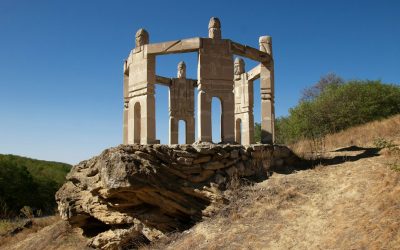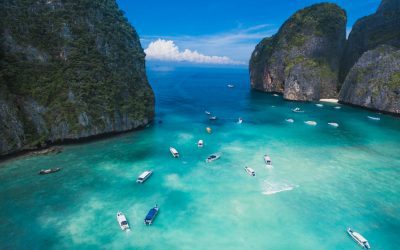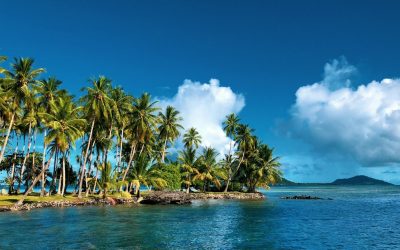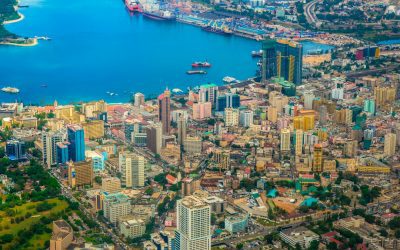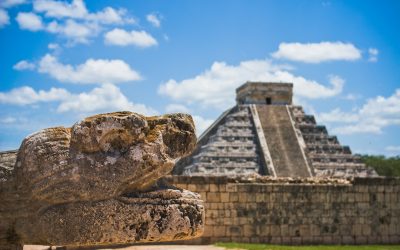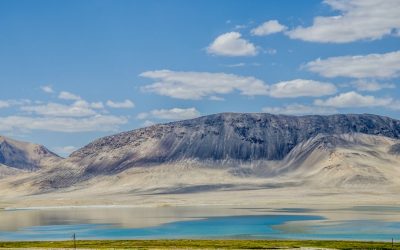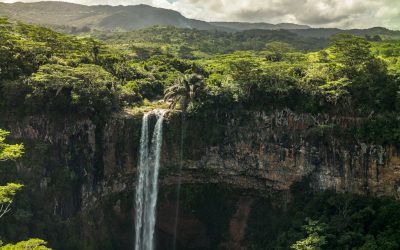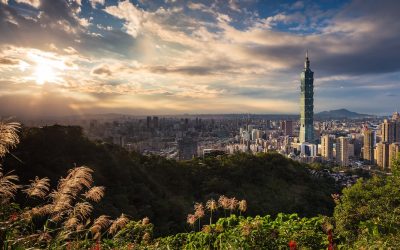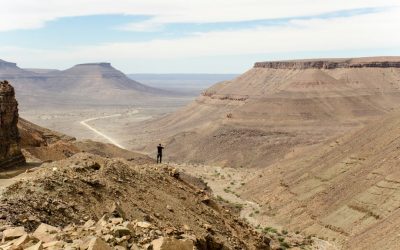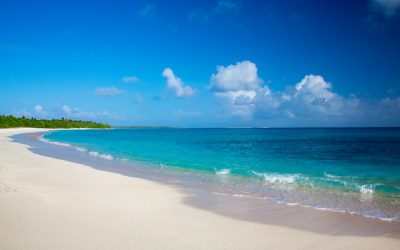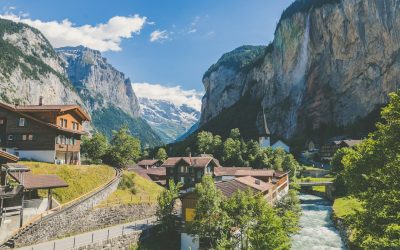World Geography
Geography is the study of the Earth’s landscapes, environments, and the relationships between people and their surroundings. It encompasses both the physical aspects of the Earth, such as its landforms, bodies of water, and climate, as well as the human aspects, including population distribution, cultures, and economies. World geography is a broad field that seeks to understand the complexities of our planet and how humans interact with it. By studying world geography, we can gain a deeper appreciation for the diversity of our planet and the interconnectedness of its various regions.
Geography is a multidisciplinary field that draws on elements of physical science, social science, and humanities. It involves the use of maps, spatial analysis, and geographic information systems (GIS) to understand the Earth’s surface and the processes that shape it. World geography also encompasses the study of human geography, which examines the ways in which people and their activities are distributed across the Earth. By understanding world geography, we can better appreciate the environmental, cultural, and economic challenges facing different regions of the world. This knowledge is crucial for addressing global issues such as climate change, resource management, and international development.
The Five Oceans and Seven Continents
The Earth’s surface is divided into five major oceans: the Pacific, Atlantic, Indian, Southern (or Antarctic), and Arctic Oceans. These vast bodies of water play a crucial role in regulating the Earth’s climate and supporting diverse marine ecosystems. The oceans also serve as important transportation routes and a source of food and other natural resources for human societies around the world.
In addition to the oceans, the Earth’s landmasses are divided into seven continents: Africa, Antarctica, Asia, Europe, North America, Australia (or Oceania), and South America. Each continent has its own unique physical and cultural characteristics, shaped by millions of years of geological processes and human history. From the deserts of Africa to the rainforests of South America, the continents offer a rich tapestry of landscapes and environments for exploration and study.
Major Mountain Ranges and Deserts
The Earth’s surface is also marked by major mountain ranges and deserts that have shaped the planet’s physical and cultural landscapes. The Himalayas, for example, are the highest mountain range in the world and are home to diverse ecosystems and cultures in countries such as India, Nepal, and Bhutan. The Andes in South America, the Rockies in North America, and the Alps in Europe are other prominent mountain ranges that have influenced human settlement patterns and economic activities.
Deserts cover about one-third of the Earth’s land surface and are characterized by low precipitation and extreme temperatures. The Sahara Desert in Africa is the largest hot desert in the world, while the Gobi Desert in Asia is one of the largest cold deserts. Deserts are not only home to unique flora and fauna but have also been important trade routes and cultural crossroads throughout history.
Climate Zones and Biomes
The Earth’s climate is influenced by a variety of factors, including latitude, altitude, ocean currents, and prevailing winds. As a result, the planet is divided into different climate zones, each with its own characteristic weather patterns and ecosystems. The equator, for example, experiences a tropical climate with high temperatures and heavy rainfall, while the polar regions have a cold and dry climate.
These climate zones give rise to different biomes, or large ecological areas characterized by distinct plant and animal communities. The tropical rainforest biome, found near the equator, is home to a diverse array of species and is vital for regulating the Earth’s climate. The grasslands biome, found in regions such as the African savannah and North American prairies, supports grazing animals and has been important for human agriculture throughout history.
Human Geography and Population Distribution
Human geography examines the ways in which people and their activities are distributed across the Earth’s surface. It encompasses topics such as population growth, migration patterns, urbanization, and cultural diversity. Understanding human geography is crucial for addressing global challenges such as poverty, inequality, and environmental degradation.
Population distribution is uneven across the world, with some regions experiencing rapid population growth while others are declining. The majority of the world’s population lives in Asia, particularly in countries such as China and India. Urban areas are also growing rapidly, with more than half of the world’s population now living in cities. This trend has significant implications for infrastructure development, resource management, and social inequality.
Historical and Cultural Geography
Historical geography examines how human activities have shaped the Earth’s landscapes over time. It explores topics such as colonialism, trade routes, and the rise and fall of empires. Cultural geography focuses on how human cultures have developed in different regions of the world and how they interact with their environments.
The Silk Road, for example, was an ancient trade route that connected China with Europe and facilitated the exchange of goods, ideas, and technologies across Eurasia. This historical trade route had a profound impact on the development of cultures and economies along its path. Similarly, cultural geographers study how different societies have adapted to their environments through practices such as agriculture, architecture, and religious beliefs.
The Importance of Geographic Knowledge
Geographic knowledge is crucial for addressing global challenges such as climate change, resource management, and international development. By understanding world geography, we can better appreciate the environmental, cultural, and economic challenges facing different regions of the world. This knowledge is crucial for addressing global issues such as climate change, resource management, and international development.
Geographic knowledge also helps us to understand our interconnectedness with other regions of the world. By studying world geography, we can gain a deeper appreciation for the diversity of our planet and the interconnectedness of its various regions. This understanding can foster a sense of global citizenship and empathy for people from different cultures and backgrounds.
In conclusion, world geography is a complex and multifaceted field that encompasses both physical and human aspects of the Earth’s landscapes. By studying world geography, we can gain a deeper appreciation for the diversity of our planet and the interconnectedness of its various regions. This knowledge is crucial for addressing global challenges such as climate change, resource management, and international development. It also helps us to understand our interconnectedness with other regions of the world and fosters a sense of global citizenship.
FAQs
What is world geography?
World geography is the study of the Earth’s landscapes, environments, and the relationships between people and their environments. It encompasses the physical features of the Earth, as well as the human activity that takes place on it.
Why is world geography important?
World geography is important because it helps us understand the world around us. It provides insights into the physical and human processes that shape our planet, and helps us make informed decisions about how to interact with our environment.
What are the main branches of world geography?
The main branches of world geography include physical geography, which focuses on the Earth’s natural features and processes, and human geography, which examines the relationships between people and their environments.
How does world geography impact our daily lives?
World geography impacts our daily lives in numerous ways, from influencing the weather and climate we experience, to shaping the availability of natural resources and influencing the distribution of populations and cultures around the world.
What are some key concepts in world geography?
Key concepts in world geography include location, place, human-environment interaction, movement, and region. These concepts help geographers understand and interpret the world around them.
Exploring the Hidden Gems of Moldova: A Journey Through Europe’s Best-Kept Secret
Nestled between Romania and Ukraine, Moldova is a hidden gem waiting to be discovered. This small Eastern European country may not be on everyone’s travel radar, but it is definitely worth a visit. Moldova offers a unique blend of history, culture, natural beauty, and delicious cuisine. From its rich cultural heritage to its vibrant nightlife, there is something for everyone in this enchanting land. Summary Moldova has a rich cultural heritage that is a delight for history buffs. Wine tasting in Moldova is a must-do activity, as it is home to some of the best wines in Europe. Nature lovers will find paradise in Moldova, with its stunning natural beauty. The local cuisine in Moldova is a gastronomical delight, offering a journey through traditional dishes. Moldova’s architecture is a fascinating blend of Eastern and Western influences. The Rich Cultural Heritage of Moldova: A Delight for History Buffs Moldova has a fascinating history that dates back centuries. The country is home to numerous historical landmarks and monuments that tell the story of its past. One such landmark is the Orheiul Vechi Monastery Complex, which is located on a high plateau overlooking the Raut River. This complex includes a cave monastery, ancient fortifications, and a museum that showcases artifacts from the region’s history. In addition to its historical landmarks, Moldova also boasts a number of museums and galleries that are worth exploring. The National Museum of History of Moldova in Chisinau houses an impressive collection of artifacts that span thousands of years. The museum provides visitors with a comprehensive overview of the country’s history, from its ancient origins to its modern-day...
Discovering the Best of Thailand: A Journey Through the Land of Smiles
Thailand, also known as the Land of Smiles, is a country that captivates visitors with its rich culture, delicious cuisine, stunning natural beauty, and warm hospitality. Located in Southeast Asia, Thailand is a must-visit destination for travelers from all over the world. From bustling cities to tranquil beaches and ancient temples to vibrant festivals, Thailand offers a diverse range of experiences that will leave you in awe. Summary Thailand offers a wealth of wonders to explore, from its vibrant culture to its natural beauty and friendly people. The country’s cuisine is a highlight, with delicious dishes to discover and enjoy. Visitors can experience the history of Thailand through its temples, monuments, and more. Festivals and celebrations are a big part of Thai culture, offering a chance to immerse yourself in local traditions. Whether you’re looking for adventure or relaxation, Thailand has plenty to offer, from trekking and rafting to tranquil beaches and islands. Exploring the Vibrant Culture of Thailand Thai culture is deeply rooted in traditions and customs that have been passed down through generations. From the moment you arrive in Thailand, you will be greeted with a warm smile and a friendly “Sawasdee” (hello). Thai people are known for their hospitality and friendliness, making visitors feel welcome and at home. Thai arts and crafts are also an integral part of the country’s culture. From intricate wood carvings to beautiful silk fabrics, Thai craftsmanship is renowned worldwide. You can visit local markets and workshops to see artisans at work and even try your hand at traditional crafts. Thailand is also famous for its festivals and celebrations. One of the...
Discovering the Hidden Gems of Micronesia: A Journey Through the Pacific’s Best-Kept Secret
Nestled in the western Pacific Ocean, Micronesia is a hidden gem waiting to be discovered. Comprising thousands of islands spread across the vast expanse of the Pacific, Micronesia is a paradise for those seeking untouched beauty, rich culture, and incredible underwater adventures. Despite its stunning landscapes and unique cultural heritage, Micronesia remains relatively unknown to many travellers, making it the perfect destination for those looking to escape the crowds and explore a truly off-the-beaten-path destination. Summary Micronesia is a hidden gem in the Pacific that offers untouched beauty, rich culture, and warm hospitality. The islands of Micronesia boast some of the best snorkelling and diving spots in the world, with crystal-clear waters and diverse marine life. Micronesia is a nature lover’s paradise, with a unique flora and fauna that includes rare species found nowhere else on earth. The cuisine of Micronesia is a culinary adventure, with a fusion of Asian, Pacific, and European influences that create a delicious and unique dining experience. Micronesia’s festivals and traditions are a celebration of life, with colourful parades, music, and dance that showcase the vibrant culture of the islands. Uncovering the Untouched Beauty of Micronesia’s Islands Micronesia is home to a myriad of islands, each with its own distinct charm and natural beauty. From the lush greenery of Pohnpei to the pristine white sand beaches of Palau, there is something for every type of traveller in Micronesia. What sets these islands apart from other tropical destinations is their untouched nature. Many of the islands have limited infrastructure and are largely undeveloped, allowing visitors to experience a sense of tranquility and seclusion that...
Discovering the Untouched Beauty of Tanzania: A Journey Through its Serengeti and Beyond
Tanzania, located in East Africa, is a country known for its breathtaking landscapes, rich wildlife, and vibrant culture. With a diverse geography that includes the Serengeti plains, Mount Kilimanjaro, and the stunning beaches of Zanzibar, Tanzania offers a wide range of natural wonders and attractions for visitors to explore. The history of Tanzania is deeply rooted in ancient civilizations and colonial influences. From the ancient trade routes that passed through the region to the German and British colonial periods, Tanzania has a fascinating past that has shaped its present-day culture. The country is home to over 120 different ethnic groups, each with their own unique traditions and languages, making it a truly diverse and culturally rich destination. One of the main draws of Tanzania is its natural beauty. From the vast savannahs of the Serengeti to the stunning Ngorongoro Crater, there are countless opportunities to witness wildlife in their natural habitats. The country is also home to Mount Kilimanjaro, the highest peak in Africa, which attracts climbers from around the world. And let’s not forget about Zanzibar, an idyllic island paradise with pristine beaches and crystal-clear waters. Summary Tanzania is a land of untouched beauty, with stunning landscapes and diverse wildlife. The Serengeti is a must-visit destination for wildlife enthusiasts, with the chance to witness the great migration. Beyond the Serengeti, Tanzania has many hidden gems to explore, from pristine beaches to ancient ruins. Tanzania’s cultural diversity is a fascinating exploration, with over 120 different ethnic groups and languages. The best time to visit Tanzania is during the dry season, from June to October, for optimal wildlife viewing. The...
Exploring the Vibrant Culture and Rich History of Mexico: A Journey Through Time
Mexico is a country rich in culture and history, with a vibrant past that has shaped its present. From ancient civilizations to Spanish conquests, from independence struggles to revolutionary movements, Mexico’s history is a tapestry of diverse influences and events. Understanding Mexico’s past is crucial in appreciating its present, as it provides insights into the country’s traditions, customs, and values. In this article, we will explore Mexico’s culture and history, from the pre-Columbian era to modern-day Mexico. Summary Mexico has a vibrant culture and rich history that spans thousands of years. The Pre-Columbian era saw the rise of ancient civilizations like the Maya and Aztecs. The Spanish conquest in the 16th century led to Mexico becoming a colony for over 300 years. Mexican independence was achieved in 1821 after a long struggle for freedom. The Mexican Revolution in the early 20th century brought about significant social and political change. Modern-day Mexico is a blend of old and new, with a thriving economy and diverse population. Mexican cuisine is a delicious journey through time, with influences from indigenous, Spanish, and other cultures. Art and architecture showcase the beauty of Mexico’s cultural heritage, from ancient ruins to modern masterpieces. Celebrations and festivals are a colourful part of Mexican traditions, including Dia de los Muertos and Cinco de Mayo. Exploring Mexico’s natural wonders offers a range of experiences, from relaxing on beaches to hiking in mountains. The Pre-Columbian Era Before the arrival of the Spanish conquistadors, Mexico was home to several advanced civilizations. The most well-known of these civilizations are the Maya, Aztec, and Olmec. Each civilization had its own unique characteristics...
Exploring the Hidden Gems of Tajikistan: A Journey Through the Heart of Central Asia
Tajikistan, located in Central Asia, is a hidden gem that is slowly gaining recognition as a unique travel destination. With its stunning landscapes, rich history, and warm hospitality, Tajikistan offers a truly authentic and off-the-beaten-path experience for adventurous travelers. Often referred to as the “Jewel of Central Asia,” Tajikistan is a country that is still relatively untouched by mass tourism, allowing visitors to immerse themselves in its natural beauty and cultural riches. Summary Tajikistan is a hidden gem in Central Asia with a rich cultural heritage and stunning natural beauty. Dushanbe, the capital city, is a cultural hub with museums, theatres, and traditional bazaars. The Fann Mountains offer breathtaking trekking opportunities with crystal-clear lakes and snow-capped peaks. Tajikistan’s location on the ancient Silk Road provides a glimpse into the country’s fascinating history and culture. Iskanderkul Lake is a must-visit destination with its turquoise waters and picturesque surroundings. The Cultural Riches of Dushanbe: Tajikistan’s Capital City Dushanbe, the capital city of Tajikistan, is a vibrant and bustling metropolis that offers a glimpse into the country’s rich history and culture. The city has a fascinating mix of influences from Persian, Russian, and Central Asian cultures, which can be seen in its architecture, cuisine, and traditions. One of the must-visit cultural attractions in Dushanbe is the National Museum of Tajikistan. This museum houses an impressive collection of artifacts that showcase the country’s history, from ancient times to the present day. Visitors can learn about the region’s ancient civilizations, the Silk Road trade route, and the country’s struggle for independence. Another cultural highlight in Dushanbe is the Gurminj Museum of Musical Instruments. This...
Discover the Exotic Beauty of Mauritius: A Must-Visit Destination for Every Travel Enthusiast
Mauritius, a small island nation located in the Indian Ocean, is often referred to as a hidden gem. With its pristine beaches, crystal clear waters, rich cultural heritage, and unique flora and fauna, it is no wonder that Mauritius has become a popular travel destination. This article will delve into the various aspects that make Mauritius a must-visit destination, from its diverse cultural influences to its top luxury resorts and spas. Summary Mauritius is a hidden gem in the Indian Ocean, offering a unique blend of cultures, stunning beaches, and exciting activities. The island’s rich cultural heritage can be explored through its museums, historic sites, and vibrant capital city of Port Louis. Mauritius’ pristine beaches and crystal clear waters make it a perfect destination for sunbathing, swimming, and water sports. Foodies will love exploring the island’s unique cuisine, which blends Indian, Chinese, African, and European influences. Adventure awaits in Mauritius, with activities like hiking, zip-lining, and scuba diving available for thrill-seekers. Uncovering the Rich Cultural Heritage of Mauritius Mauritius is a melting pot of cultures, with influences from India, Africa, China, and Europe. This diversity is reflected in the island’s cuisine, language, and traditions. Visitors to Mauritius can explore the island’s cultural heritage by visiting various sites and attending cultural events. One must-visit cultural site is the Aapravasi Ghat, a UNESCO World Heritage site. This site was once a landing point for indentured laborers from India and is now a museum that tells the story of their journey and the impact they had on Mauritian society. Another cultural site worth visiting is the Ganga Talao, a sacred lake for...
Discovering the Hidden Gems of Taiwan: A Journey Through the Land of Tea and Temples
Nestled in the heart of East Asia, Taiwan is a captivating island that offers a wealth of natural beauty, rich history, and vibrant culture. With its stunning landscapes, diverse cultural heritage, and warm hospitality, Taiwan has become an increasingly popular destination for travelers seeking an authentic and immersive experience. From its bustling cities to its tranquil countryside, Taiwan has something to offer every type of traveler. Taiwan’s geography is as diverse as its culture. The island is located off the southeastern coast of China and is surrounded by the East China Sea to the north, the Philippine Sea to the east, and the South China Sea to the south. Its mountainous terrain, which includes the majestic Central Mountain Range, provides breathtaking views and opportunities for outdoor adventures such as hiking and cycling. In addition to its mountains, Taiwan is also home to beautiful beaches, hot springs, and lush forests. The history of Taiwan is equally fascinating. Originally inhabited by indigenous peoples, the island has been influenced by various waves of migration and colonization throughout its history. From Dutch and Spanish rule in the 17th century to Japanese occupation in the early 20th century, Taiwan has a complex and layered history that has shaped its unique identity. Today, Taiwan is a democratic nation with a thriving economy and a vibrant cultural scene. Summary Taiwan is a land of enchantment, with a rich culture and natural wonders waiting to be explored. Temples and shrines offer a glimpse into Taiwan’s fascinating history and traditions. Taiwan’s tea culture is a deep and complex art form, with a long and storied history. Hidden gems...
Discovering the Hidden Gems of Mauritania: A Journey Through the Land of the Sahara
Mauritania, located in Northwest Africa, is a country that often goes unnoticed by travelers. However, this hidden gem is a land of untapped beauty and rich culture waiting to be explored. With its diverse landscapes, vibrant traditions, and warm hospitality, Mauritania offers a unique travel experience that is unlike any other. Mauritania has a fascinating history that dates back thousands of years. It was once part of the ancient empires of Ghana, Mali, and Songhai, and later became a French colony before gaining independence in 1960. This rich history is reflected in the country’s culture, which is a blend of Arab-Berber traditions and Sub-Saharan African influences. One of the lesser-known aspects of Mauritania is its traditional clothing, music, and dance. The Mauritanian people take great pride in their cultural heritage and often wear traditional garments such as the boubou, a flowing robe worn by both men and women. Music and dance are also an integral part of Mauritanian culture, with traditional instruments such as the tidinit (a stringed instrument) and the tbal (a drum) being used to create captivating rhythms. Summary Mauritania is a land of untapped beauty and rich culture waiting to be explored. The unique traditions and customs of Mauritania offer a fascinating glimpse into the country’s history and heritage. Journeying through the Sahara Desert is an enchanting experience that should not be missed. Exploring the history and architecture of Nouakchott is a must for anyone interested in Mauritanian culture. Mauritanian cuisine is a rich tapestry of flavours and aromas that will tantalise your taste buds. Uncovering the Unique Traditions and Customs of Mauritania Hospitality and community...
Unveiling the Humanitarian Crisis in Syria 2020: A Call for Global Action
The ongoing conflict in Syria has resulted in one of the most severe humanitarian crises of our time. The situation in the country is dire, with millions of people displaced, infrastructure destroyed, and lives lost. It is crucial that we address this crisis and provide assistance to those affected by the conflict. Summary The Syrian conflict has caused a humanitarian crisis that is affecting millions of civilians. Civilians are facing violence, displacement, and a lack of basic necessities like food and healthcare. The refugee crisis is a global issue, with millions of Syrians seeking safety in other countries. Humanitarian aid is crucial in providing relief to those affected by the conflict. International support and protection of human rights are necessary to address the crisis and protect vulnerable populations. The Syrian Conflict: A Brief Overview The conflict in Syria began in 2011 as a result of the Arab Spring protests that swept across the Middle East. The initial protests were met with a violent response from the government, leading to an escalation of violence and the formation of armed opposition groups. The conflict quickly spiraled into a full-scale civil war, with multiple factions vying for control. The major players involved in the conflict include the Syrian government led by President Bashar al-Assad, various opposition groups, including the Free Syrian Army and extremist groups such as ISIS, as well as international actors such as Russia, Iran, and the United States. These different factions have different goals and interests, making a resolution to the conflict extremely challenging. The Impact of the Syrian Conflict on Civilians The impact of the Syrian conflict on...
Discovering the Enchanting Beauty of the Marshall Islands: A Journey to the Heart of the Pacific
The Marshall Islands, located in the Pacific Ocean, is a hidden gem waiting to be discovered by adventurous travelers. Comprising 29 coral atolls and 5 single islands, this remote destination offers pristine beaches, crystal-clear waters, and a rich cultural heritage. Despite its small size and relative obscurity, the Marshall Islands has much to offer visitors who are seeking a unique and off-the-beaten-path travel experience. Summary The Marshall Islands are a hidden gem in the Pacific, offering a unique travel experience. The history and culture of the Marshall Islands are fascinating and worth exploring. The natural wonders of the Marshall Islands, including beaches and underwater attractions, are breathtaking. The traditional cuisine of the Marshall Islands is unique and offers a taste of local culture. Accommodation options and festivals in the Marshall Islands make it a great destination for any traveler. The Fascinating History and Culture of the Marshall Islands The history of the Marshall Islands dates back thousands of years, with evidence of human habitation as early as 2,000 BC. The islands were first colonized by Micronesian settlers, who developed a complex society based on fishing and agriculture. In the 16th century, Spanish explorers arrived in the region, followed by German and Japanese colonial rule in the late 19th and early 20th centuries. Today, the Marshallese people have a strong connection to their cultural heritage, which is evident in their language, art, music, and dance. Traditional Marshallese culture revolves around communal living and a deep respect for nature. Visitors to the Marshall Islands can immerse themselves in this rich cultural heritage by participating in traditional ceremonies, learning about local customs,...
Switzerland: A Scenic Wonderland of Alpine Adventures and Charming Villages
Switzerland, located in the heart of Europe, is a country known for its stunning landscapes, charming villages, and rich history and culture. It is a popular travel destination for nature lovers, adventure enthusiasts, and those seeking a relaxing getaway. From the majestic alpine scenery to the picturesque villages, Switzerland offers a wide range of attractions and experiences that will leave visitors in awe. Whether you are interested in skiing and snowboarding in the Swiss Alps, hiking and trekking in the mountains, or indulging in Swiss cuisine and shopping, Switzerland has something for everyone. Summary Switzerland’s Alpine landscape is a visual treat for nature lovers. Quaint and charming villages in Switzerland are worth exploring. Skiing and snowboarding in the Swiss Alps is an unforgettable experience. Hiking and trekking in Switzerland’s stunning mountains is thrilling. Swiss lakes and waterfalls are beautiful and worth discovering. Switzerland’s Majestic Alpine Landscape: A Visual Treat for Nature Lovers Switzerland is famous for its majestic alpine landscape, with towering mountains, crystal-clear lakes, and lush green valleys. The Swiss Alps offer some of the most breathtaking views in the world, making it a paradise for nature lovers. The Matterhorn, located in the canton of Valais, is one of the most iconic mountains in Switzerland. Its distinctive pyramid shape has made it a symbol of the country. Visitors can take a cable car or hike to the summit for panoramic views of the surrounding peaks. Another must-visit destination for nature lovers is the Jungfrau region. Located in the Bernese Alps, this area is home to three famous peaks: Jungfrau, Mönch, and Eiger. The Jungfrau Railway takes visitors to...
